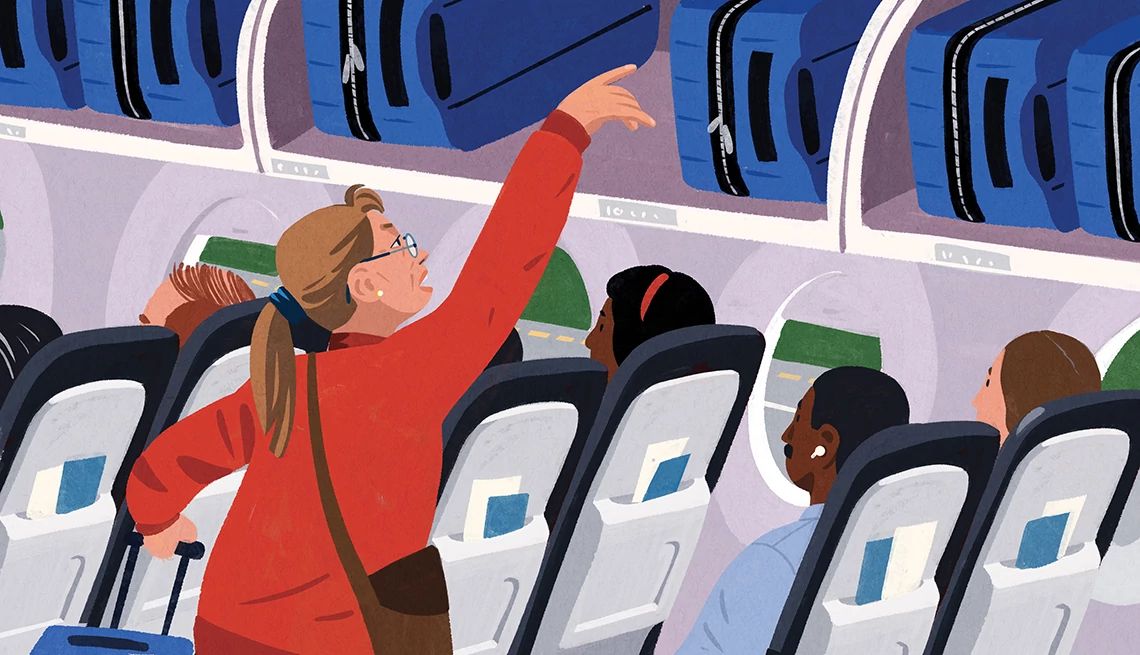
I lost my cpap machine on a trip to portugal | members only
- Select a language for the TTS:
- UK English Female
- UK English Male
- US English Female
- US English Male
- Australian Female
- Australian Male
- Language selected: (auto detect) - EN
Play all audios:

I turned in the mystery traveler’s device (no contact info on or in the case) to the Lisbon airport’s lost and found and filed my own missing carry-on reports. This generated file numbers,
which did eventually help me find my machine. That same day, I received an email from the airline saying the mystery traveler had returned my CPAP to the airport ... in Ottawa, Canada. A
cabin crew would take it to Dulles International Airport near Washington, D.C., then pass it to another cabin crew bound for Lisbon, where I could pick it up the next morning. That night was
torturous. Without my CPAP, my airways sometimes narrow or close while I sleep. I may snore, or stop breathing. This usually happens a few times every hour when I’m trying to sleep. Then my
body rouses itself just enough to gasp for air and start breathing again — but not enough to remember anything. But it was only one night. I thought. The next morning, the CPAP didn’t
arrive. I began contacting customer service multiple times a day. This meant hours talking on the phone, waiting on hold, leaving voicemails or sending emails or texts — all while trying
to enjoy Lisbon’s cobblestone streets, museums and restaurants. Through perseverance, I got to someone who located my CPAP at the lost and found at Dulles. An official there gave me three
options: pick it up in D.C., pay to have it shipped to my home in Texas, or pay (a prohibitive amount) to have it sent to Portugal. “But it wasn’t my fault,” I said. “It’s a medical device.
I need it!” I CAN BREATHE AGAIN I considered scrapping the rest of my trip and returning to the States to retrieve my machine so I could get a good night’s rest. Instead, I made one
last-ditch attempt to get it to Portugal: I googled my airline’s corporate officers and sent my sad story to every executive for whom I could find an email address, from the CEO and the
president to the head of human resources. (I may also have sent it to some investors.) Did that do the trick? All I know is this: Two days later — a week into my two-week vacation — my
CPAP arrived in Portugal, packed securely in a box. It was a “goodwill gesture,” an airline representative later said. Now back in Texas, I took a simple step to prevent future mix-ups —
taking permanent metallic markers and doodling sparkly stars, squiggles and swirls on the case, as well as placing my prescription and contact information inside. In the future, no one will
mistake my CPAP for theirs, I hope. TIPS FOR TRAVELING WITH A MEDICAL DEVICE Here are some ways to avoid damage or loss. * Take a photo of your device and its travel bag, says Christopher
Elliott, a Seattle-based travel expert and consumer advocate. If it gets lost, you can show airline officials what it looks like. * Ask the airline several days before departure about any
special requirements. Your device must be Federal Aviation Administration-approved, and if you need to use it in flight, most airlines will want you to let them know about it 48 hours in
advance. * Don’t put the device in checked baggage, Elliott says. Airlines usually are able to track down lost checked baggage, but not necessarily by the time you need it. Also, checked
baggage can get damaged. * Place your prescription inside the case, advises the Transportation Security Administration. You may need this to prove that it’s a qualifying medical device, not
subject to carry-on limits. * Attach your contact information and personalize your travel case so it won’t be confused with someone else’s. And consider placing a tracking device in your bag
that syncs with a phone app.
